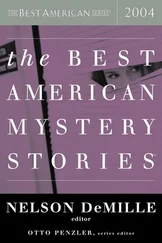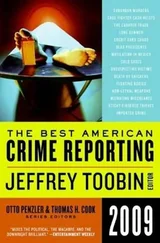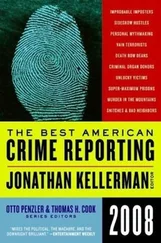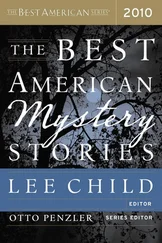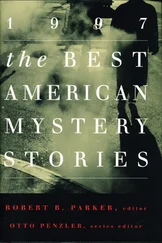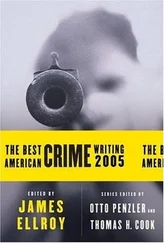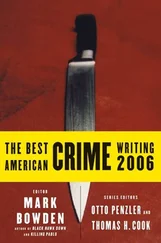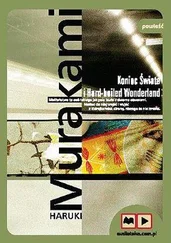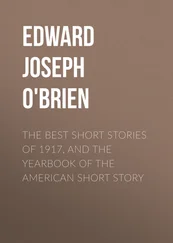In the same way that pulp magazines had brought about the decline and fall of dime novels, paperback originals and the new medium of television sounded a death knell for the pulps. All major pulp titles were extinct by 1954. The new domain of the hard-boiled short story, in the late 1950s and throughout the 1960s, was the digest-size detective magazine. Ellery Queen’s Mystery Magazine ( EQMM ) had been well established since 1941, but only occasionally did its editor-in-chief, Frederic Dannay, include a genuinely gritty tale; Dannay was not a proponent of the form (except for Hammett’s work, which he admired extravagantly). The time was ripe for a new outlet devoted solely to the form, and in 1953 one came along: Manhunt, a showcase for tough, downbeat, violent stories of “the seamier side” of contemporary life. Manhunt’s premier issue, dated January 1953, featured the first installment of a new serial by Mickey Spillane, “Everybody’s Watching Me,” plus short fiction by such established names as William Irish (Cornell Woolrich) and Kenneth Millar (Ross Macdonald) and such future stars as Evan Hunter. Sales far exceeded the expectations of its publisher, Michael St. John, and its editor, John McCloud — nearly 500,000 copies of that first issue — and instantly established Manhunt as the new standard bearer.
So successful was the magazine in the early to mid-1950s that St. John and McCloud were able to elicit hard-edged original stories from Erle Stanley Gardner, Rex Stout, Fredric Brown, and other respected mystery writers, as well as from a surprising array of literary figures: James M. Cain, Nelson Algren, Erskine Caldwell, James T. Farrell, Charles Jackson, and Ira Levin. A plethora of Manhunt clones with tough, staccato titles that almost verged on self-parody soon crowded the newsstands: Accused, Hunted, Pursuit, Guilty, Trapped, Two-Fisted, Sure-Fire, Justice, Suspect, and four from Manhunt’s own publishing company: Verdict, Menace, Murder! and Mantrap. Few of these lasted more than a handful of issues. A small number survived the decade (mainly those, such as Guilty and Trapped, that specialized in brutal stories about juvenile delinquents), but even that group had all but disappeared by the end of 1962.
Manhunt reigned for a scant few years; by 1959, its quality and its circulation had fallen off radically, as a result of editorial and financial mishandling, apathy, and changing reader tastes. The last important author and story to appear in its pages was Raymond Chandler’s Philip Marlowe tale “Wrong Pigeon” in the February 1960 issue; the story had been unpublished in the United States, although it had appeared in England as “The Pencil.” Few writers of note contributed material to Manhunt from 1960 onward. It lingered until 1967, most of the time as a bimonthly under different ownership. When it finally died it was a ghost of its former self, publishing reprints from its heyday and generally poor original stories by unknowns.
Mike Shayne Mystery Magazine ( MSMM ) and Alfred Hitchcock’s Mystery Magazine ( AHMM ), both founded in 1956 and both moderately successful as purveyors of genre crime stories, were the main inheritors of the post-1960 hard-boiled short story. Neither specialized in the form, however, though the preponderance of selections in most issues of MSMM could be termed hard-boiled. Now and then, a new periodical devoted to noir fiction would appear — notably, Ed McBain’s Mystery Book in 1960 and Mystery Monthly in 1975 — but these had short runs.
The last issue of MSMM was published in 1985. Since then, the hard-boiled short has had no regular forum. One quarterly magazine, Hard-boiled, is currently in existence, but it is semiprofessionally produced and has a limited circulation. EQMM and AHMM, the last of the mystery digests, publish hard-boiled stories now and then, as do such magazines as Playboy. Theme anthologies of original stories have provided another inconsistent market. Among anthologies of this type are four published under the auspices of the Private Eye Writers of America: The Eyes Have It (1984), Mean Streets (1986), An Eye for Justice (1988), and Justice for Hire (1990).
It is in the novel form that the hard-boiled story has had the most growth over the past quarter-century, in large part as a response to the Pandora’s box of disorders afflicting modern society: the insidious and epidemic presence of drugs and drug trafficking, random violence, AIDS, homelessness, the abortion issue, child abuse, spousal abuse, and rape. Until the constraints placed on writers by society’s moral guardians began to relax in the early 1970s, such issues had to be treated either in oblique, often superficial fashion or not at all. Today’s writers of hard-boiled fiction have far more latitude than their predecessors did to examine their subject matter honestly and incisively, as frankly and at whatever depth they deem necessary. Their work not only is more searching and therefore more powerful than that of their predecessors, but is erasing the line of demarcation between genre crime fiction and literature. In effect, the hard-boiled crime story has grown into adulthood, and in the process has attained some of the wisdom and insight of adulthood. To say that it is capable of attaining a great deal more is to bestow on it both high praise and the challenge of responsibility.
In the 1970s and early 1980s, several notable detective characters entered the field, among them Lawrence Block’s alcoholic former New York cop Matt Scudder, in Sins of the Fathers (1976); James Crumley’s Shugrue, in The Last Good Kiss (1978); Jonathan Valin’s Cincinnati private eye Harry Stoner, in The Lime Pit (1980); and Loren D. Estleman’s Detroit-based Amos Walker, in Motor City Blue (1980). The emergence over the past fifteen years of the female private eye (and such offshoots as realistically portrayed women cops, probation officers, and lawyers) has broadened the hard-boiled form’s scope and horizon; with relatively few exceptions, it had been a male-dominated subgenre, in terms of both its writers and its readers. The best and most popular of these tough new women sleuths are Marcia Muller’s Sharon McCone, who made her debut in Edwin of the Iron Shoes (1977) as the first fully realized female private eye created by a woman; Sue Grafton’s Kinsey Milhone, who first appeared in A Is for Alibi (1981); and Sara Paretsky’s V. I. Warshawski, whose initial investigation was Indemnity Only (1982).
Most significant among recent nonseries noir novels are those that address major social issues. Jonathan Kellerman and Andrew Vachss have each written harsh condemnations of child abuse, in such novels as When the Bough Breaks (1985) and Hard Candy (1989), respectively. In Bitter Medicine (1987), Sara Paretsky pulls no punches in addressing women’s health issues. The Silence of the Lambs, Thomas Harris’s 1988 bestseller, unrelentingly probes the psychology of the serial killer. The mounting controversy surrounding illegal immigration is the subject of Marcia Muller’s Wolf in the Shadows (1993). Sexual harassment is the central theme of Linda Grant’s A Woman’s Place (1994), and sexual exploitation of women through pornography is the topic explored by Lia Matera in Face Value (1994).
This introduction would not be complete without a brief mention of film noir. Film has proved fertile ground for the hard-boiled movement from the 1930s to the present day. During the 1940s and 1950s, directors seized on the grim and at times unremittingly bleak visions of Cornell Woolrich, James M. Cain, and David Goodis, among others, and transformed them into minor masterpieces of moody, shadow-filled filmmaking. There are dozens of film noir classics; a few of the outstanding examples based on hard-boiled fiction include Jacques Tourneur’s The Leopard Man (1943), taken from Woolrich’s Black Alibi ; Edward Dmytryk’s Murder My Sweet (1944), adapted from Raymond Chandler’s Farewell, My Lovely, Delmer Daves’s Dark Passage (1947), whose source was a book of the same title by David Goodis; Fritz Lang’s The Big Heat (1953), based on a William P. McGivern novel of that name; and Stanley Kubrick’s The Killing (1956), adapted from Lionel White’s Clean Break.
Читать дальше

